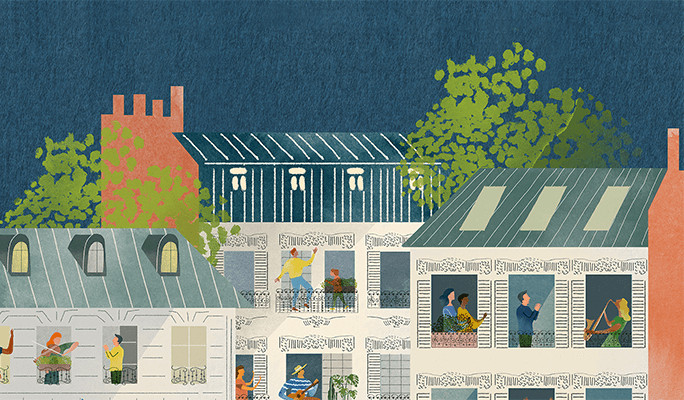
Storytelling is at the heart of architecture and design. For Josh Sanabria, CEO of independent media company DesignClass, great stories foster curiosity and creativity. Moving between design and technology, Sanabria has launched numerous competitions and interactive classes to celebrate design and advocate its impact. In a new interview with ArchDaily, Sanabria explores storytelling, media and technology, as well as how designers can create meaningful impact through their work.

Why did you choose to study architecture?
Like a lot of people who read ArchDaily, architecture was my first love. I always admired how buildings could be so much more than walls, windows, and doors. They could be powerful and emotional while merging the two worlds of art and logic.
Working across design and media, you’re the Founder & CEO of GoArchitect. You’ve also launched DesignClass, which creates online classes taught by leaders in art & design. What is the mission of DesignClass, and what do you hope to achieve with your work?
DesignClass is on a mission to foster curious and creative confidence. We do this by being active stewards in the design community. This has translated into creating online classes and competitions from leaders in art & design, running student scholarships, and even helping to develop a summer abroad program.

DesignClass started in 2019 with the idea that architecture has the power to positively impact people’s lives. I admired how certain online education startups were creating high-quality learning experiences with famous innovators in the US. However, for every one Samuel L. Jackson, there are 10 talented but not-quite-famous artists and designers who have dedicated their lives to their craft, pushed through amazing challenges, and are creating great work.
We aim to bring those stories and experiences to the global design community. We believe that by telling those stories and showing the nitty-gritty details behind the creative process, that the next generation of artists and designers will be better prepared for a challenging world.

Can you tell us more about your upcoming work, including to help students around the world learn about architecture?
There is a burden on my heart to spur on the love of design in future generations. The question has always been, how do I do this? I’ll be honest, I am not a teacher. What I am though is a leader, organizer, and a person of direction. Now, with DesignClass as a platform with over 800 students, I’ve begun to analyze how we can expand beyond our typical college and young-professional audience and reach out to high school and even elementary students.
Earlier this year, we launched the Paul R. Williams Student Scholarship to help support diversity in the architecture field through scholarships to black high school students entering an architecture program. The scholarship has already supported 4 students and we hope to fund many more next semester. Our co-sponsorships with M-Rad, Rush Dixon Architects, Edward Deegan Architects & Interiors, and the Charleston AIA have made this all possible.

With changes to climate, technology, and construction, how do you think architects and designers will adapt ways of practicing to advance the profession?
I’ll focus on one aspect, climate. We all know architects are trying to walk the walk and talk the talk when it comes to the sustainability of the buildings they design. However, something I never hear about is the sustainability of their businesses. Architecture firms can have a very high carbon footprint from traveling to clients, construction site visits, printing, model making, and the offices themselves. This carbon footprint is even higher for those famous international firms that design most of the “sustainable” buildings we see in the media..

This issue was brought to my attention earlier this year, so we decided to do something about it. DesignClass is now not only carbon neutral but climate positive. Climate positive means that we go beyond achieving net zero carbon emissions to create an environmental benefit by removing more carbon dioxide from the atmosphere than we produce. None of this would be possible without an amazing new company called Ecologi. I would challenge other firm leaders to explore how they can offset their carbon footprint.
Changes due to COVID-19 have been swift. How do you think the pandemic will shape design?
If Covid-19 has taught us anything, it’s that human connection is incalculably important to us as humans. We are willing to risk everything to simply be around other people. As professionals who craft space for human beings, we need to remember that it really is all about the people. If your design doesn’t tap into that caveman instinct for solidarity, your building won’t last.

As you look to the future, are there any ideas you think should be front and center in the minds of architects and designers?
In my mind, one of the biggest ideas that deserves more attention within architecture is how to move the business side of the field forward. Traditional architecture faces many threats, whether it’s the ups and downs of the economy or the potential for AI to dominate design.
In my opinion, one of the best ways we can ensure the long-term stability of the field is to become more involved in the development and investment of projects. Architects need to come out of the business shadows and use their visual and analytical talents for a new purpose. I know it may seem intimidating to a lot of people, but at the same time, I see promise.
DesignClass recently held a competition that encouraged designers to think like architects as developers and the results were amazing. Shoutout to Freecell for getting first place!






